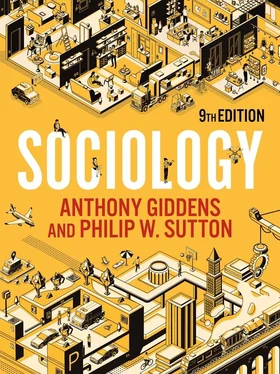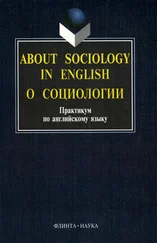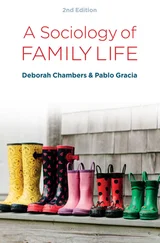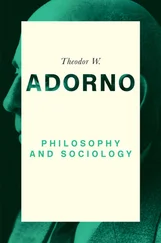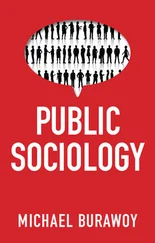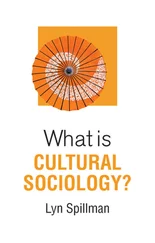The Muslim scholar Ibn Khaldun was born in what is today Tunisia and is famous for his historical, sociological and political-economic studies. He wrote many books, the most widely known of which is a six-volume work, the Muqaddimah (‘Introduction’), completed in 1378. This is viewed by some scholars today as essentially an early foundational work of sociology (see Alatas 2006). The Muqaddimah criticized existing historical approaches and methods as dealing only with description, claiming instead the discovery of a new ‘science of social organization’, or ‘science of society’, capable of getting at the underlying meaning of events.
Ibn Khaldun devised a theory of social conflict based on understanding the central characteristics of the ‘nomadic’ and ‘sedentary’ societies of his time. Central to this theory was the concept of ‘group feeling’ or solidarity ( asabiyyah ). Groups and societies with a strong group feeling were able to dominate and control those with weaker forms of internal solidarity. Ibn Khaldun developed these ideas in an attempt to explain the rise and decline of Maghribian and Arab states, and in this sense he may be seen as studying the process of state-formation – itself a main concern of modern, Western historical sociology. Nomadic Bedouin tribes tended towards a very strong group feeling, which enabled them to overrun and dominate the weaker sedentary town-dwellers and establish new dynasties. However, the Bedouin then became settled into more urbanized lifestyles and their previously strong group feeling and military force diminished, thus leaving them open to attack from external enemies once again. This completed a long cycle in the rise and decline of states. Although Western historians and sociologists of the late nineteenth and early twentieth century referred to Ibn Khaldun’s work, only in very recent years has it again come to be seen as potentially significant.
Do some online research into one of these three figures. What explanations are offered for their work being neglected by sociologists for most of the twentieth century?
Functionalism emphasizes the importance of moral consensus in maintaining order and stability. Moral consensus exists when most people in a society share the same values. Functionalists regard order and balance as the normal state of society, and this social equilibrium is grounded in the moral consensus among society’s members. For instance, Durkheim argued that religious beliefs reaffirm people’s adherence to core social values, thereby contributing to the maintenance of social cohesion.
Until the 1960s, functionalism was probably the leading theoretical tradition in sociology, particularly in the United States. Talcott Parsons (1902–79) and Robert K. Merton (1910–2003) were two of its most prominent exponents. Merton’s version of functionalism has been particularly influential. He distinguished between manifest and latent functions. Manifest functions are those known to, and intended by, the participants in a specific type of social activity. Latent functions are consequences of that activity of which the participants are unaware. For instance, Merton examined the rain dance performed by the Hopi tribe of Arizona and New Mexico. The Hopi believe that this ceremony will bring the rain they need for their crops (a manifest function). But the rain dance, Merton argued, also has the effect of promoting group cohesion of Hopi society (its latent function). A major part of sociological explanations, according to Merton, consists in uncovering the latent functions of intentional social activities and institutions.
Merton also distinguished between functions and dysfunctions. To look for the dysfunctional aspects of social behaviour means focusing on features of social life that challenge the existing order of things. For example, it is mistaken to suppose that religion is always functional and that it only contributes to social cohesion. When religious groups disagree with one another the result can be major social conflict, causing widespread social disruption. Thus, wars have often been fought between religious communities – as can be seen in the struggles between Protestants and Catholics in Europe or between Sunni and Shia Muslims in the Middle East.
Since the late 1970s the popularity of functionalism has waned as its limitations have become apparent. Though it is not true of Merton, many functionalist thinkers focused on stability and social order, minimizing social divisions and inequalities based on factors such as class, ethnicity and gender. Functionalism also placed too little emphasis on the role that creative social action can play within society. Many critics argued that functional analysis attributes to societies social qualities that they do not have. For instance, many functionalists often wrote as though whole societies have ‘needs’ and ‘purposes’, even though these concepts make sense only when applied to individual human beings. Just as significantly, in the 1960s and 1970s there emerged a wave of so-called new social movements – involving, among others, students, environmentalists and peace movements – which functional analysis seemed particularly ill-equipped to understand and explain.
Like functionalists, sociologists using conflict theories emphasize the importance of social structures, advancing a comprehensive ‘model’ to explain how society works. However, conflict theorists reject functionalism’s emphasis on consensus. Instead, they highlight the importance of social divisions and concentrate on issues of power, inequality and competitive struggle. They tend to see society as composed of distinct groups, each pursuing its own interests, which means the potential for conflict is always present. Conflict theorists examine the tensions between dominant and disadvantaged groups, looking to understand how relationships of control are established and maintained.
Both Marx and later Marxist approaches have been highly influential in conflict theory, though it is important to note that by no means all conflict theories are Marxist. Feminism, for example, is a form of conflict theory which concentrates on gender inequality – the unequal situation between men and women that exists in most societies. For some feminist theorists, gender inequality is more significant than class-based inequality and has a much longer history. Male domination of society continues even today, though women’s political activism has made an impact in many areas of life, bringing about a measure of equality (Abbott et al. 2005).
As a conflict perspective in sociology, feminism draws attention to issues that sociologists previously ignored. In particular, feminist research and theorizing look at the micro level as well as the macro world of large social structures. For example, feminists have studied unequal gender relations in domestic situations and other ‘private’ spheres of life (such as sexual relations), a controversial move in the 1960s and 1970s (Rahman and Jackson 2010). Feminists have also carried out research into the use of gender stereotypes and language in interactions, pointing out and challenging many taken-for-granted ‘malestream’ assumptions (favouring men over women) built into the structure of how we describe and think about the world. We can see this in numerous everyday words and expressions, such as chairman, mankind (to discuss humanity as such) and man-made. This is a simple illustration of the myriad ways in which women’s subordinate position in society is reflected in the unacknowledged male domination of language itself.
Feminists do not ignore the macro level either. Feminist studies have shown that gender inequality is embedded within modern social structures such as legal systems, education and schooling, government and politics, and many more. Similarly, in order to demonstrate the extent and scope of gender inequality, feminist work has made use of official statistics and examined patterns of change over long time periods. Feminist theorizing has continually developed into new areas and types of theory, and these are covered in more detail later in the book.
Читать дальше
